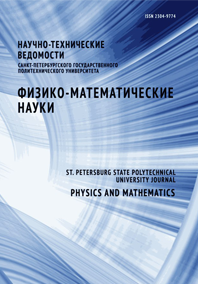Evolution features of laser electrode-surface morfology in the gas discharge plasma
The effect of plasma flows on the cathode surface in the He-Ne plasma of a gas discharge has been investigated using X-ray photoelectron spectroscopy, the electron microprobe analysis, including atomic composition analysis in the depth profiling and in the raster mode. The studies were supplemented by modeling of the arc discharge in vacuum arc-quenching chambers up to the melting of the metal-alloyed electrodes based on the two-component systems under critical discharge rate (under increased power). In all instances there were identified the processes lead-ing to the degradation and destruction of the cathode surface. Method of electronic microprobe analysis revealed a change in the composition of chromium-copper alloy electrode in the depth due to thermal effects at all stages of production, testing and service. In the zone of the melted electrodes, we observed redistribution of the main components and a substantial decrease in the oxygen concentration.
Citation: A.I. Kudyukin, P.A. Borisovsky, S.V. Gavrilov, M.N. Makhmudov, E.N. Moos, G.V. Kiselyov, L.I. Kiselyova, V.A. Stepanov, Evolution features of laser electrode-surface morfology in the gas discharge plasma, St. Petersburg Polytechnical State University Journal. Physics and Mathematics. 10 (4) (2017) 92–99. DOI: 10.18721/JPM.10407


